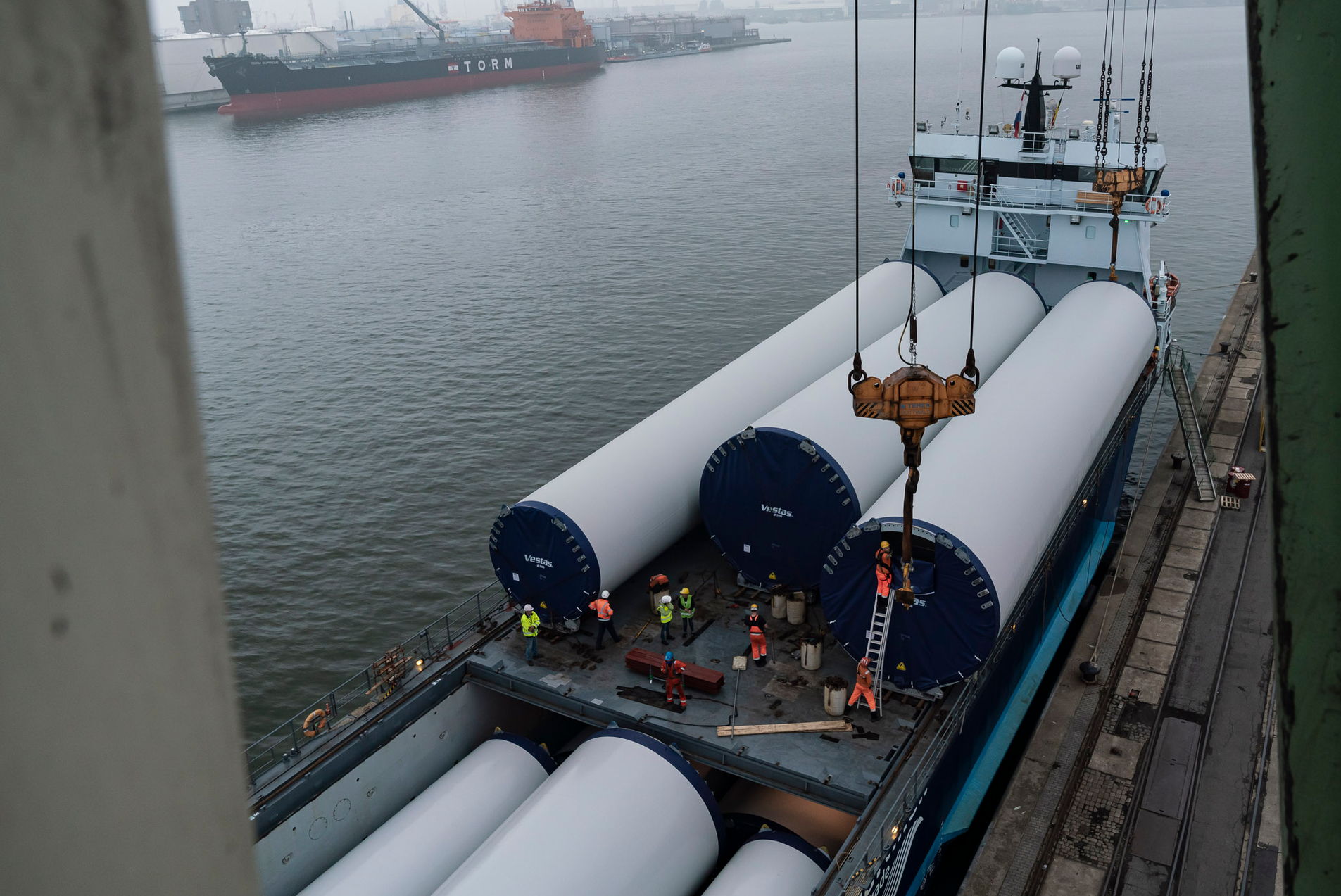Project cargo on the rise at Port of Antwerp thanks to EU Green Deal
Conventional breakbulk grew by 74% in 2021
Breakbulk volumes grew explosively in 2021 at the Port of Antwerp, after a huge downward spiral in 2020 due to the pandemic and global trade wars. The main driver is a sharp increase in steel import volumes. But also striking is the rise in project cargo shipments, thanks to ongoing projects around renewable energy and the construction of chemical plants.
In 2021, breakbulk volumes reached 1 million tons per month, totaling 11.5 million tons for the whole year (excl. roro). This marks no less than a 74% rise in figures compared to 2020, surpassing the previous record growth of 2012. On top of that, Port of Antwerp reclaimed its market leadership in Europe, confirming its home port position for breakbulk.
Ann De Smet, key account manager at Port of Antwerp explains: “One of the main drivers for this growth was the lack of container capacity. In 2021, we saw a huge increase in general cargo given the pressure on the container market. But alongsidethis decontainerization trend, the global economic recovery is also pushing steel figures upwards, and transport of project cargo is boosted by EU measures to meet climate ambitions.”
Green Deal
The Fit for 55 package and other measures taken by the EU to evolve to carbon neutrality is pushing European industry to further transit to carbon neutral sources of energy and hence driving refurbishment of plants and investment in renewable energy – marked by significant government investments in this sector. Port of Antwerp is home to a huge chemical cluster and expects further developments in this respect.
Wind turbine components or power plant units
The port's geographical location helps to secure the transport of project cargo to and from Europe, such as cargo destined for energy plants in Germany or northern France via road or inland waterways.
Wind turbine components heading for France for instance, have become a regular transport in Antwerp. Several specialized service providers are involved to carefully handle blades, hubs, nacelles, motors and tower sections. The meticulously coordinated process of unloading these long or heavy pieces is illustrated in a story on the Port of Antwerp website, along with insights into other cargo journeys – ranging from heavy units transhipped onto a barge heading for a power plant along the River Neckar in Germany, to precious metal furnaces manufactured in Germany and shipped to China via Antwerp.
Operational challenges
“Project cargo is highly relevant in the Port of Antwerp, in view of the expected growth potential, high employment rate and evolution of many service providers in the port with top class expertise” says Ann De Smet. “I believe that this sector will continue to claim its spot in the global supply chain and adds diversification in a port platform.It will however be a big challenge to attract and inspire young people to join the sector. In breakbulk, every shipment is unique and requires a lot of dedication and care.”
Annick De Ridder, chairman of the board of directors of Port of Antwerp and Antwerp Alderman responsible for the port: "The port of Antwerp is thé European breakbulk home port and has been so for many centuries. We therefore have all the necessary experience, grafted on the highest possible quality and flexibility, to provide the right solutions tailored to the customer. The record figures for the past year are the best proof of this, with tribute to the entire Antwerp breakbulk community!"
The sudden growth in breakbulk volumes is also putting resources and handling capacity to the test. Currently, breakbulk service providers are doing all they can to cope with any operational disruptions to be able to service the industry through its growth. Many of them are also investing in the expansion of capacity, dedicated warehouses with reinforced floors, heavy lift cranes and intermodal linked terminals. Terminal operator PSA Breakbulk plans to invest 11 million euro for a new heavy cargo terminal along the Churchill dock, while packing specialist Deufol is extending its warehousing capacity in Antwerp for the seaworthy packaging of industrial loads.
Ready for the future
Ann De Smet is optimistic about what the future has in store: “The aftermath of the pandemic will continue to be felt – global supply chain challenges, terminal capacity and labor shortages are likely to keep us busy for much of 2022. Unreliable supply chains and rising energy prices are making the project market very volatile and hard to predict. But strengthened by last year’s experience, I am confident that our service providers will tackle every challenge, no matter how complex it is, under the motto ‘Exceptional cargo, outstanding care’.”
Read more on project cargo in the Port of Antwerp at www.portofantwerp.com/en/projectcargo
